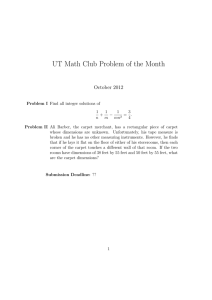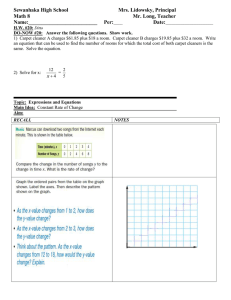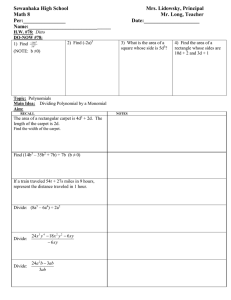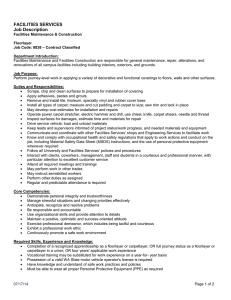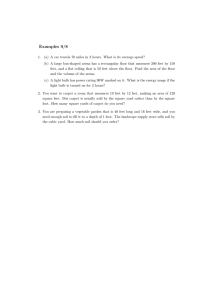Assignment 2 – Carpet Seam Placement and Takeoff 1. Diagram
advertisement
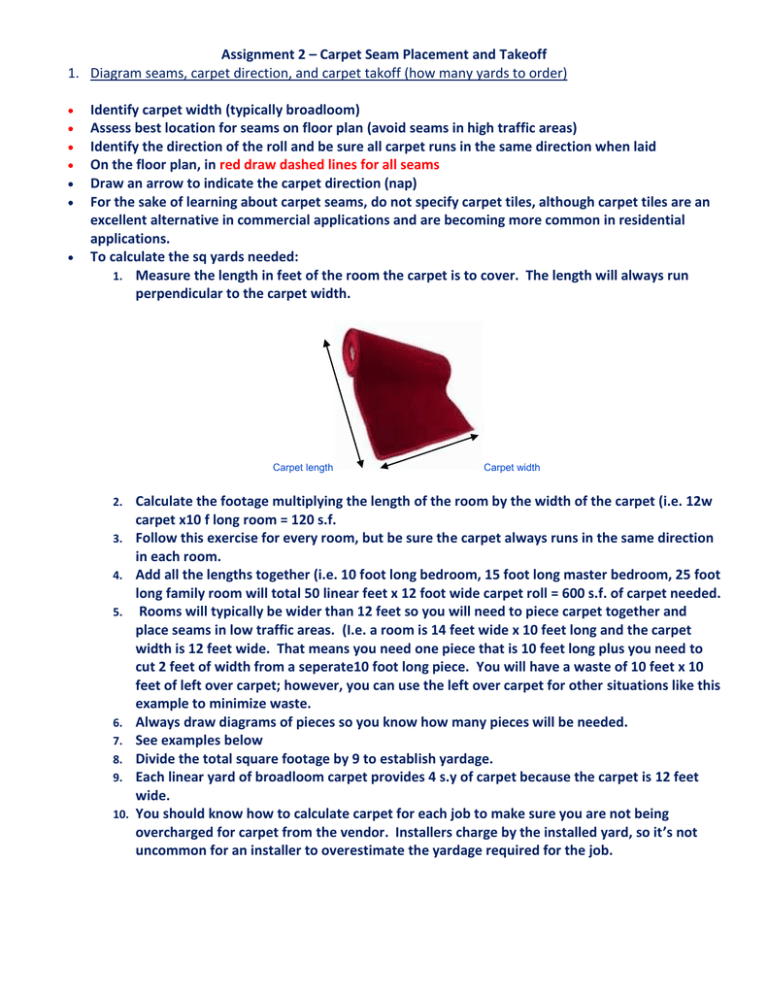
Assignment 2 – Carpet Seam Placement and Takeoff 1. Diagram seams, carpet direction, and carpet takoff (how many yards to order) Identify carpet width (typically broadloom) Assess best location for seams on floor plan (avoid seams in high traffic areas) Identify the direction of the roll and be sure all carpet runs in the same direction when laid On the floor plan, in red draw dashed lines for all seams Draw an arrow to indicate the carpet direction (nap) For the sake of learning about carpet seams, do not specify carpet tiles, although carpet tiles are an excellent alternative in commercial applications and are becoming more common in residential applications. To calculate the sq yards needed: 1. Measure the length in feet of the room the carpet is to cover. The length will always run perpendicular to the carpet width. Carpet length 2. 3. 4. 5. 6. 7. 8. 9. 10. Carpet width Calculate the footage multiplying the length of the room by the width of the carpet (i.e. 12w carpet x10 f long room = 120 s.f. Follow this exercise for every room, but be sure the carpet always runs in the same direction in each room. Add all the lengths together (i.e. 10 foot long bedroom, 15 foot long master bedroom, 25 foot long family room will total 50 linear feet x 12 foot wide carpet roll = 600 s.f. of carpet needed. Rooms will typically be wider than 12 feet so you will need to piece carpet together and place seams in low traffic areas. (I.e. a room is 14 feet wide x 10 feet long and the carpet width is 12 feet wide. That means you need one piece that is 10 feet long plus you need to cut 2 feet of width from a seperate10 foot long piece. You will have a waste of 10 feet x 10 feet of left over carpet; however, you can use the left over carpet for other situations like this example to minimize waste. Always draw diagrams of pieces so you know how many pieces will be needed. See examples below Divide the total square footage by 9 to establish yardage. Each linear yard of broadloom carpet provides 4 s.y of carpet because the carpet is 12 feet wide. You should know how to calculate carpet for each job to make sure you are not being overcharged for carpet from the vendor. Installers charge by the installed yard, so it’s not uncommon for an installer to overestimate the yardage required for the job. Here are two examples: One residential and one commercial: http://www.floorcoveringsoft.com/flooring_design/ http://www.floorcoveringsoft.com/flooring_design/
